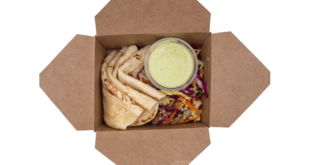Let’s face it—restaurants are energy hogs.
According to the National Restaurant Association, restaurants use five times more energy per square foot than other types of commercial buildings. And of the energy that restaurants use, the kitchen uses five times more than the rest of the building. Energy costs, on average, represent approximately 30% of a building’s annual budget.
Energy efficiency is essential to a restaurant’s bottom line. Given our industry’s razor-thin profit margins—between 4% and 6%, typically—every dollar saved in energy costs is like an extra $20 in sales. Canada’s Office of Energy Efficiency (OEE) estimates that investing in efficiency measures can save you 20% on your energy costs.
The decision to invest in energy efficiency is a relatively easy one, but deciding what to spend money on is a very different proposition. Every facility is different and a variety of factors—including the age of your building, the kind of food you serve, and the types of appliances you have—affect what will make a dent in your energy costs. What works for you might not be suitable for someone else.
Fortunately, there are some straightforward ways to figure out how best to invest your energy budget.
- Determine where your energy is going. In an average full-service restaurant, food prep makes up 35% of the building’s energy consumption, with heating, ventilation, and air conditioning (HVAC) consuming 28%. An energy audit—done by a professional, or simply by evaluating your utility bills—will help you figure out where you’re spending the most money, and where you might be able to improve
- Compare your facility with similar buildings. Talk to your neighbours and other restaurateurs to establish benchmarks for your performance. Are they doing better than you? Worse? What are their bills like?
- Calculate the payback period of any potential investment. This is how long it will take for an upgrade to pay for itself through savings. For a preliminary introduction, take a look at BizEnergy’s post on simple payback.
- Select which energy efficiency measures you’re going to take. These might include purchasing new, high efficiency ENERGY STAR appliances, implementing an energy management system, or simply replacing your lightbulbs—you’ll be able to determine what will work best for your space. Make sure you take a look at rebates and financial incentives that may be available from the government and from your local utilities.
While you may not have the funds to invest in a complete high-efficiency kitchen retrofit, there are inexpensive steps you can take that will have an immediate impact on your bills. Upgrading your lighting, for example, is a simple and relatively inexpensive change that will help reduce your energy costs quickly. Picking the low-hanging fruit is a good way to free up savings that can then be used for more extensive measures in the future.
Another strategy to reduce your energy efficiency investment is to roll your energy upgrades into your equipment replacement plan. When a piece of restaurant equipment needs to be replaced, purchase a model that’s as efficient as possible.
Keep in mind that it’s usually not enough simply to install energy efficient appliances and sit back to watch the savings roll in. Work with your staff to implement operating procedures that emphasize conservation, like formal start-up and shut-down schedules. That way, you’ll support your investment in technology with a change in human behaviour.
For more information, check out BizEnergy’s post on simple, DIY ways to cut your energy costs.
 Corner Booth Blog | TundraFMP Restaurant Supply, News & Equipment Blog
Corner Booth Blog | TundraFMP Restaurant Supply, News & Equipment Blog



